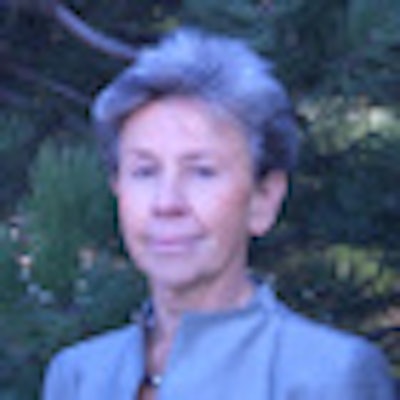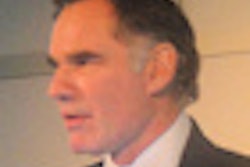
With radiology playing an increasing role in the diagnosis and subsequent treatment of various maladies and diseases, the demand for qualified radiologists in Europe is expected to continue throughout this decade.
As experienced radiologists grow older and ponder retirement, it has become even more critical to recruit and retain qualified young people to the specialty to fill both current and anticipated future demand for imaging services.
"The lack of radiologists is relative, but there is no doubt that there is a gap between the demand for diagnostic imaging and the availability of radiologists," said Dr. Malgorzata Szczerbo-Trojanowska, chairperson of the department of radiology at the University Medical School in Lublin, Poland. "We want to [close] that gap and we have to find a way to do it."
Szczerbo-Trojanowska, who spoke at ECR this month in Vienna, cited the consensus of previous studies that young people seek a career in healthcare because they want to help people in need, solve complex health issues, contribute to decisions for patient outcomes, and gain professional and social recognition.
 Dr. Malgorzata Szczerbo-Trojanowska, the chairperson of the department of radiology at the University Medical School in Lublin, Poland.
Dr. Malgorzata Szczerbo-Trojanowska, the chairperson of the department of radiology at the University Medical School in Lublin, Poland.Achieving expectations
However, radiology does not always fulfill those expectations, Szczerbo-Trojanowska said. Because radiology's role in treatment has expanded during the last decade, due in part to new hybrid imaging technologies, the workload for radiologists has increased dramatically -- resulting in more stress and often less recognition for their efforts.
"Radiologists have to work more effectively, which means, in practice, that radiologists are spending very often the whole day in front of the workstation with no time for other activities," she said.
Szczerbo-Trojanowska also doesn't think there is enough appreciation of the profession. She cited a study in which 38% of patients felt radiologists did not play an important role in their treatment, and 40% did not think radiologists were part of the medical team. In addition, 36% of the respondents were not aware that radiologists were responsible for choosing the proper imaging modality, and only 65% knew that radiologists reported studies (European Radiology, October 2009, Vol. 19:10, pp. 2326-2332).
"I think this does not put us in a very comfortable position, and obviously it is not easy to change [the situation], especially in a short period of time," she said.
European diversity
Given its diversity, Europe also has the issue of aligning differences in radiology education, examinations, documentation, and procedures, as well as various languages, cultures, and ways in which healthcare is structured.
"Nevertheless," said Dr. Jarl Jakobsen, a professor from the department of radiology and nuclear medicine at Oslo University Hospital in Norway, "The European Society of Radiology (ESR) has worked seriously on these [issues] and provided a plan for common education, standards, and knowledge. It is a good beginning of a system, but the system needs to be filled by people."
At ECR 2011, Jakobsen said recruitment is the first step in bringing young people to radiology. By recruiting at the local level, prospective radiologists can be guided toward an ESR diploma or the European Union level of approved education for radiologists.
At Oslo University Hospital, residents are paired with an experienced radiologist with a degree in administration to provide professional leadership for the young residents. "Personalized leadership helps [young radiologists] adapt to the life situation, and provides systematic education to specialized sections, such as neurology, pediatrics, and interventional radiology," he said.
Personal guidance
Every resident must also have a personal tutor in the department to help the individual resident with his or her educational progress year to year. Students are also encouraged to attend national courses and radiology meetings.
Younger residents then use social media to express their views about the courses and their experiences. "They should be treated so they act as our ambassadors and recruiting agents when they go to other hospitals," Jakobsen said.
When a facility has good, qualified staff, it is important to keep it. One of the most important things a radiology department can provide is good leadership asserted by the residents' closest leader. "As the head of the department, you can't do it yourself," Jakobsen said. "The closest leader must have upon himself the domain to be a very good leader for the young radiologists."
He also recommends young radiologists be given a degree of autonomy in organizing their working week, especially with on-call schedules and the use of teleradiology from home and for consultations.
Invest in Youth
Szczerbo-Trojanowska credited the ESR's Youth Program for its work in attracting more young people to the profession.
ESR established its Invest in Youth program five years ago to allow young radiologists and trainees to attend ECR. In the first year, approximately 300 young radiologists from Europe came to Vienna. "The program expanded very quickly, and last year students also were invited, which, in my opinion, is far more important," she said. "Altogether, there were 2,000 students and residents [in 2010], which was 11% of the total number of ECR participants."
At ECR 2011, students for the first time were given the opportunity to present their own papers. There were more than 200 abstracts submitted.
"Remember that we have to plan for the near and distant future," Jakobsen said. "It takes five years to educate a radiologist, so we must be five years ahead and planning. That is why we need a good, permanent culture that will recruit and attract people."



















